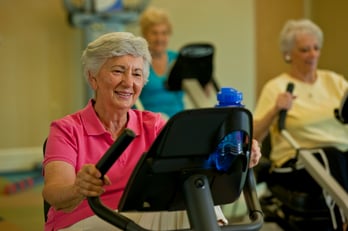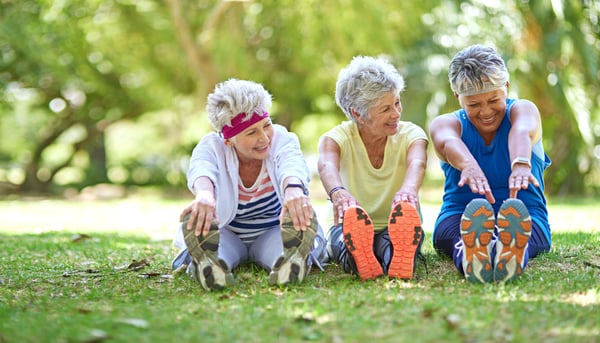 Community wellness programming is one of the most important ways to keep your residents engaged. As wellness professionals, it’s our job to make sure that the programs being put into play are impactful and enjoyable, and continue to set precedents and work on the varying dimensions of wellness.
Community wellness programming is one of the most important ways to keep your residents engaged. As wellness professionals, it’s our job to make sure that the programs being put into play are impactful and enjoyable, and continue to set precedents and work on the varying dimensions of wellness.
ZOOM: Get a New Perspective on Wellness
Have you heard of the book Zoom? It’s a children’s book by Istvan Banyai. Each page zooms out a little bit farther until you see the bigger picture. Sometimes, as wellness leaders, we tend to forget to “zoom out” and look at what’s working and what isn’t.
When looking at the bigger picture, try to take in all of the offerings at the community. What is working? What isn’t working? What programs need to be revamped or even tossed out? How is your community keeping up with fitness and wellness trends in order to stand out among the rest?
Collecting and Analyzing Data
Most communities have a way of collecting attendance data and feedback from residents. If this isn't happening at your community, consider it to be of utmost importance in order to provide quality programming and understand how residents react to evolving programming.
For communities that do not have data collection in place, consider looking at this blog post by Emily Davenport, NIFS Director of Fitness Management and Active Aging Services, to help you understand how to get started. Once you have a clean, simple way of collecting resident data, it will eliminate a lot of stress.
For communities that do have this in place, look through the data to see what is trending at the community and what isn’t. What trends are you seeing? Are you noticing an influx of residents committing to a program for a couple of months and then falling off the wagon? Are you seeing numbers holding steady and noticing a positive benefit from certain programs that are worth keeping the same? Being able to tap into this data collection is key when deciding what works for the community and what needs to be improved upon.
To Keep or Not to Keep?
Taking an in-depth look into offerings is also a great way to understand whether something needs to be let go. A great way to do this is to look at comparative data over the months/years and start asking questions. If you notice that a program or offering fluctuates in attendance, you may want to consider revamping the offering in a new and exciting way. Maybe the program went from being well-attended to never attended. If that’s the case, you probably would be better off taking away that program and adding something else, or recreating a different offering to increase attendance.
Always Leave Them Wanting MORE
When resident attendance starts to increase, keep in mind that your programs need to evolve. This doesn’t mean that you need to constantly reinvent the wheel, but it does mean that you should continually add different aspects to your programs. If we lack evolution of our offerings, our communities start to get stagnant and too comfortable. Including new and innovative ways to get our community members involved is a key piece when standing out as wellness professionals.
The reason most of us have become wellness professionals is to impact the well-being and improve the quality of life for our residents, patients, or team members. It’s our duty to continually provide engaging, fun, and interactive ways for our community members to learn, grow, and live out their lives in a positive way.


%20and%20dog%20GettyImages-890287958%20(1).jpg?width=300&name=Senior%20(male)%20and%20dog%20GettyImages-890287958%20(1).jpg)

.jpg?width=476&name=Magnifying%20glass%20GettyImages-859832992%20(1).jpg)



 As someone who exercises daily, I have fought myself on this topic. Why should I track my progress if I am feeling good about what I am doing? If I am working out every day, I will gradually see results and continue to climb that never-ending improvement ladder! Well, as it turns out, achieving goals more complicated than that.
As someone who exercises daily, I have fought myself on this topic. Why should I track my progress if I am feeling good about what I am doing? If I am working out every day, I will gradually see results and continue to climb that never-ending improvement ladder! Well, as it turns out, achieving goals more complicated than that.